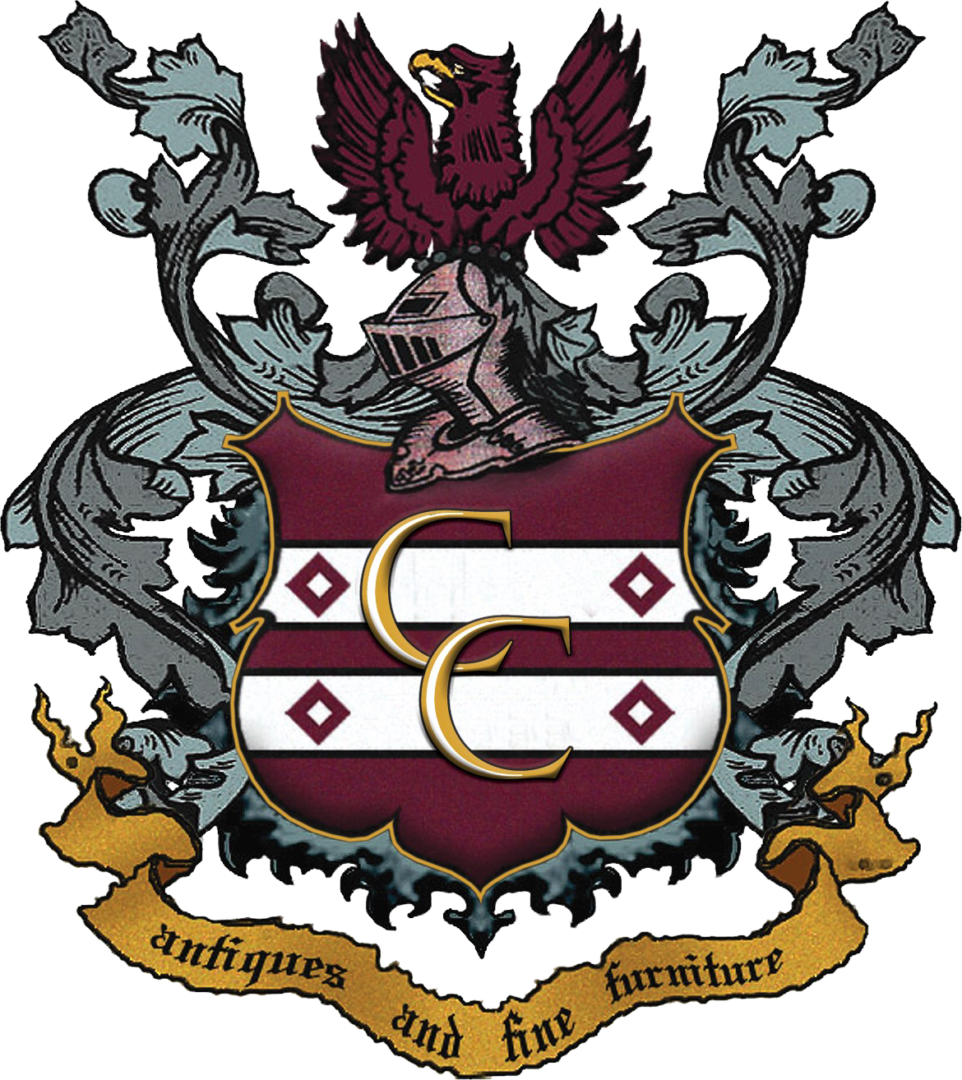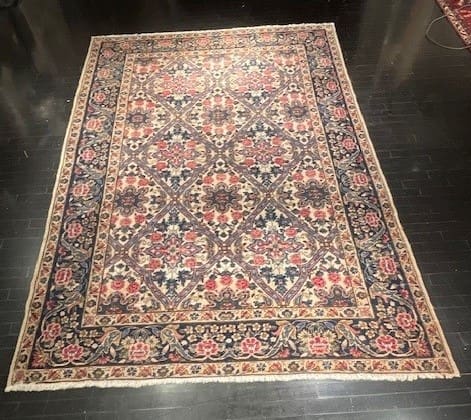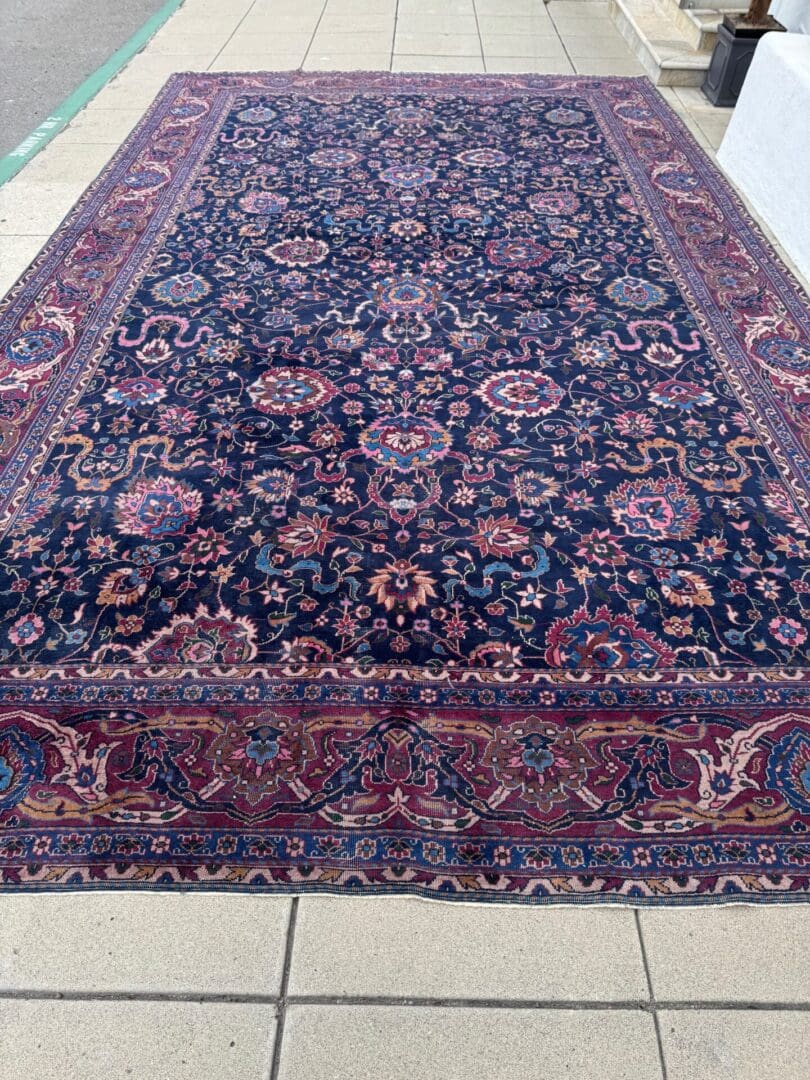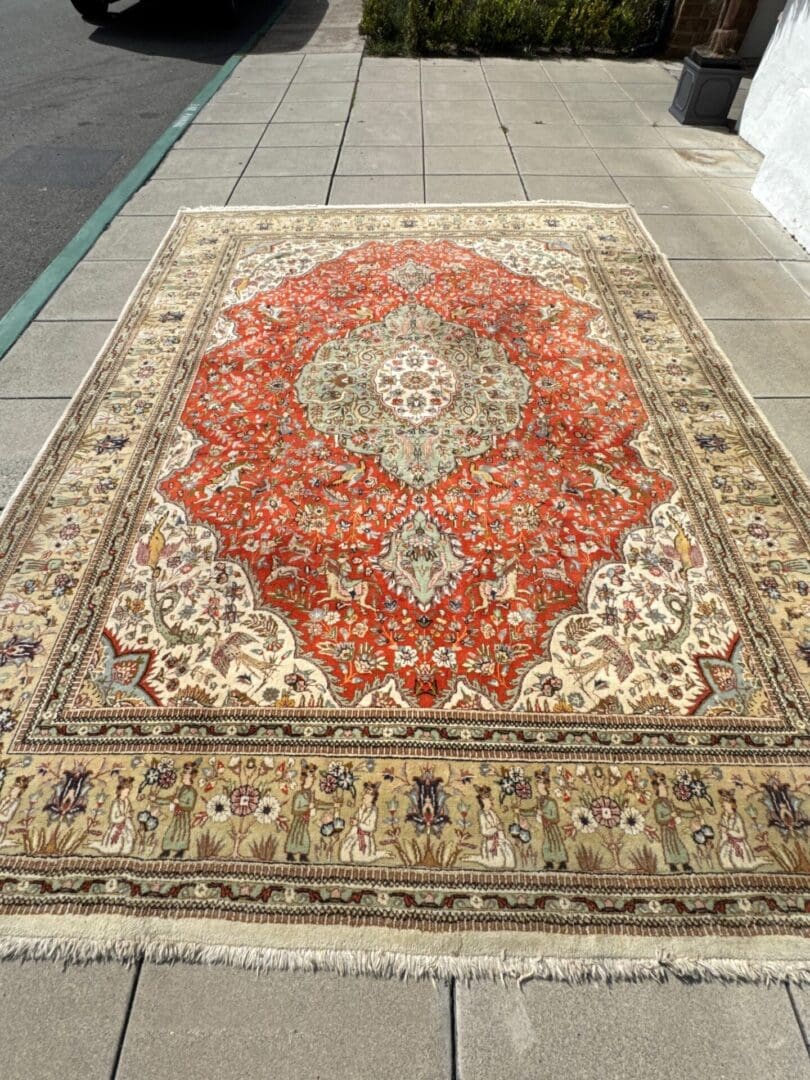Large Carpet
Showing all 5 resultsSorted by latest
Handmade Antique Persian Kerman Carpet 14.2 x 9.9
Handmade Antique Persian Kerman Carpet 14.2 x 9.9
This Elegant Hand-knotted Persian Kerman carpet features a classic central medallion with intricate floral motifs in rich reds, blues, and ivory. Woven in south east Iran, Lerman carpets are known for their fine wool, high knot density and refined designs. a favorite of Persian nobility and prized by collectors, this piece showcases the timeless artistry of one of Iran’s most respected carpet weaving centers.
Old handmade Yazd Lattice Carpet 11’1 x 7’11 wide
Old handmade Yazd Lattice Carpet 11’1 x 7’11 wide
This elegant hand-knotted Persian Yazd carpet showcases the refined artistry of central Iran, where traditional weaving has flourished for centuries. Likely made in the early to mid-20th century, this piece is crafted from high-quality wool and features a classic lattice garden design—a motif deeply rooted in Persian symbolism, representing paradise and eternal harmony.
The intricate pattern is set against a soft ivory field, framed by a deep indigo border and richly decorated with stylized floral motifs, such as palmettes, rosettes, and scrolling vines in shades of crimson, rose, and blue. The design reflects the lasting influence of Safavid-era aesthetics, particularly in its balance and detailed ornamentation.
Yazd carpets are known for their tight weave, durable construction, and use of natural dyes. They were traditionally made for affluent families and collectors who appreciated the precision and elegance of Persian court-inspired textiles.
Extra Large Indian Handmade Carpets 17 foot x 12 foot
Extra Large Indian Handmade Carpets 17 x 11’11
This is a hand-knotted Indian wool carpet, crafted in the style of traditional Oushak designs but made in India—where master weavers have long replicated classic Persian and Turkish motifs with their own regional craftsmanship. Woven with high-quality, hand-spun wool, the carpet features a soft, neutral palette with a lightly abrashed field and subtle floral medallions in muted red, giving it a refined and understated elegance.
Indian weavers began producing rugs like this in the late 19th and early 20th centuries, particularly for export to Europe and America. Today, these carpets are prized for their versatility, durability, and graceful blend of tradition and contemporary appeal.
Rare extra-large Antique Sarouk 18′ x 12’8
Rare extra-large Antique Sarouk 18 x 12’8
This stunning antique Persian Sarouk carpet, likely woven in the early 20th century, exemplifies the rich weaving tradition of the Arak region in west-central Iran. It features a deep indigo field filled with a dense allover floral pattern—elegant boteh (paisley), stylized blossoms, and scrolling vines—all rendered in soft rose, ivory, and sky-blue tones. The absence of a central medallion reflects the Western market’s taste during the 1920s–30s, particularly in the U.S., where Sarouks were highly sought after for their grace and durability.
Sarouk carpets of this era are often associated with the post-Sarouk “American Sarouk” revival, when rugs were frequently dyed to achieve a rich blue or raspberry hue. The refined wool, tight weave, and fluid curvilinear design connect this piece to classical Persian aesthetics, echoing motifs found in Safavid court carpets of the 17th century.
A true heirloom, this Sarouk is not only a decorative masterpiece but also a historical artifact representing a golden age of Persian rug production for an international clientele.
Persian Pictorial Tabriz Carpet 11’9 x 9’4
Persian Pictorial Tabriz Carpet 11’9 x 9’4
This exquisite Persian Tabriz carpet is a striking example of the refined artistry from one of Iran’s oldest and most prestigious weaving centers. Woven in the classical tradition of the Tabriz school, it features a grand central medallion set against a vivid red field adorned with delicate floral motifs, mythical animals, and symbolic garden imagery—echoing the Persian concept of paradise.
The borders are particularly notable, showcasing intricate human figures in courtly attire, likely inspired by Safavid-era miniature painting—a period when Tabriz was a major cultural and artistic hub. These narrative scenes reflect the rich storytelling tradition woven into Persian carpets during the 16th and 17th centuries.
Hand knotted with fine wool , this piece not only serves as a decorative treasure but also as a tapestry of Persian heritage, blending elegance, symbolism, and centuries of weaving mastery.





